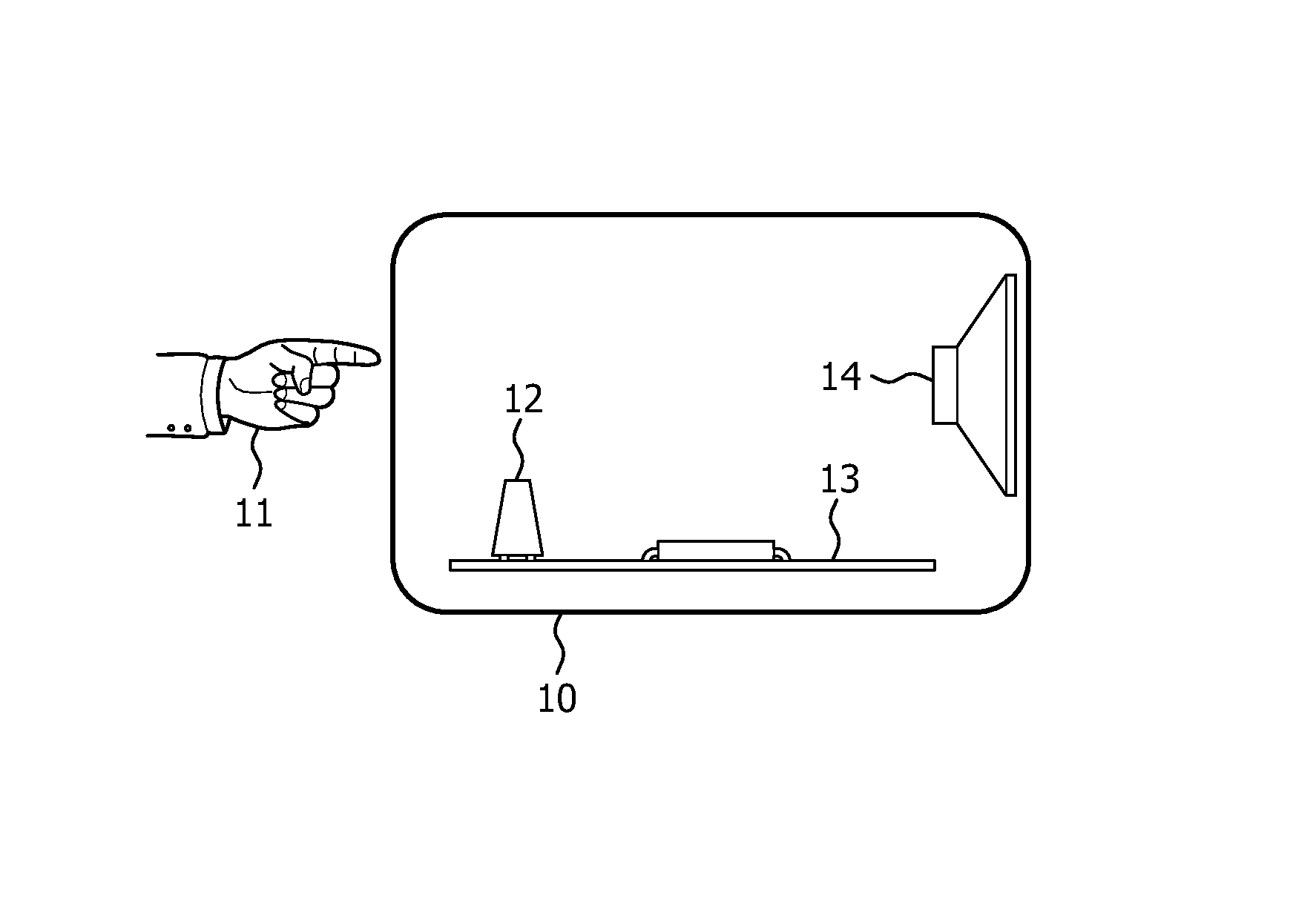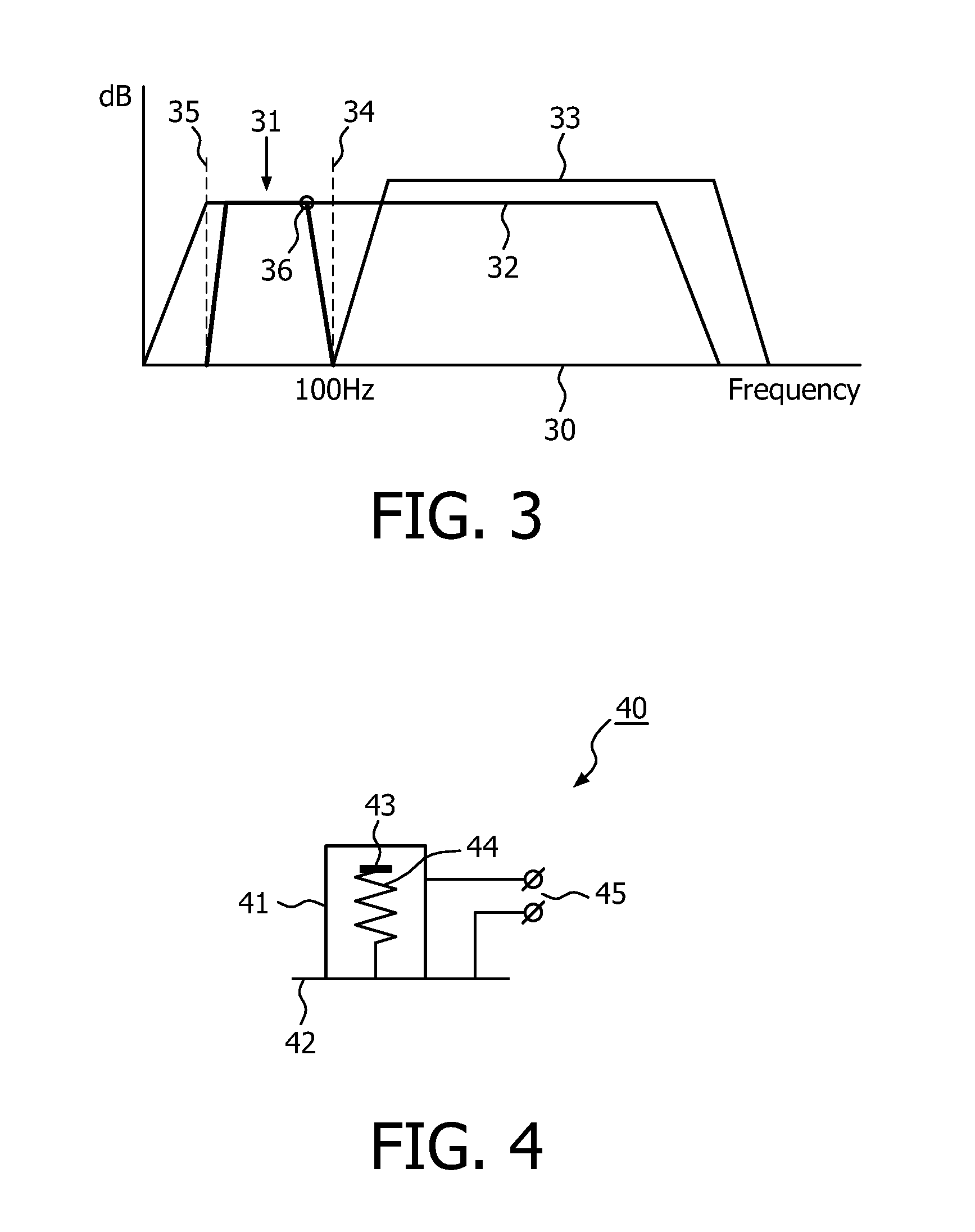Tap sensitive alarm clock
a technology of alarm clock and sensitive technology, which is applied in the direction of mechanical time indication, instruments, and horology, can solve the problems of unreliability of the tapping function of such a tap sensitive alarm clock having an audio unit, and sometimes unintentionally activating the snooze function, etc., and achieves the effect of reducing noise disturbance, sensitivity adjustment, and reducing nois
- Summary
- Abstract
- Description
- Claims
- Application Information
AI Technical Summary
Benefits of technology
Problems solved by technology
Method used
Image
Examples
Embodiment Construction
[0025]FIG. 1 shows a tap sensitive alarm clock. The alarm clock has a housing 10. A user may tap on the housing to activate a function of the alarm clock, as indicated by a user's hand 11, in any appropriate way (slamming, banging, knocking, etc). Thereby a mechanical shock is applied to the housing. A vibration sensor 12 is mechanically coupled to the housing, e.g. by locating the sensor on the inside against a wall or against an inner element of the housing. In the Figure, the sensor is located on an electronic circuit board 13 that is mechanically attached to the housing. The function of the electronic board according to the invention is discussed in detail with reference to FIG. 2, and may further comprise any known function for an alarm clock operated by a human user. Also devices similar to the alarm clock, like a kitchen appliance, a gaming device, etc may be provided with the tap sensitive function according to the invention. The device further has an audio output element su...
PUM
 Login to View More
Login to View More Abstract
Description
Claims
Application Information
 Login to View More
Login to View More - R&D
- Intellectual Property
- Life Sciences
- Materials
- Tech Scout
- Unparalleled Data Quality
- Higher Quality Content
- 60% Fewer Hallucinations
Browse by: Latest US Patents, China's latest patents, Technical Efficacy Thesaurus, Application Domain, Technology Topic, Popular Technical Reports.
© 2025 PatSnap. All rights reserved.Legal|Privacy policy|Modern Slavery Act Transparency Statement|Sitemap|About US| Contact US: help@patsnap.com



